GRAN LOGIA UNIDA DE INGLATERRA
Página 1 de 1.
 GRAN LOGIA UNIDA DE INGLATERRA
GRAN LOGIA UNIDA DE INGLATERRA
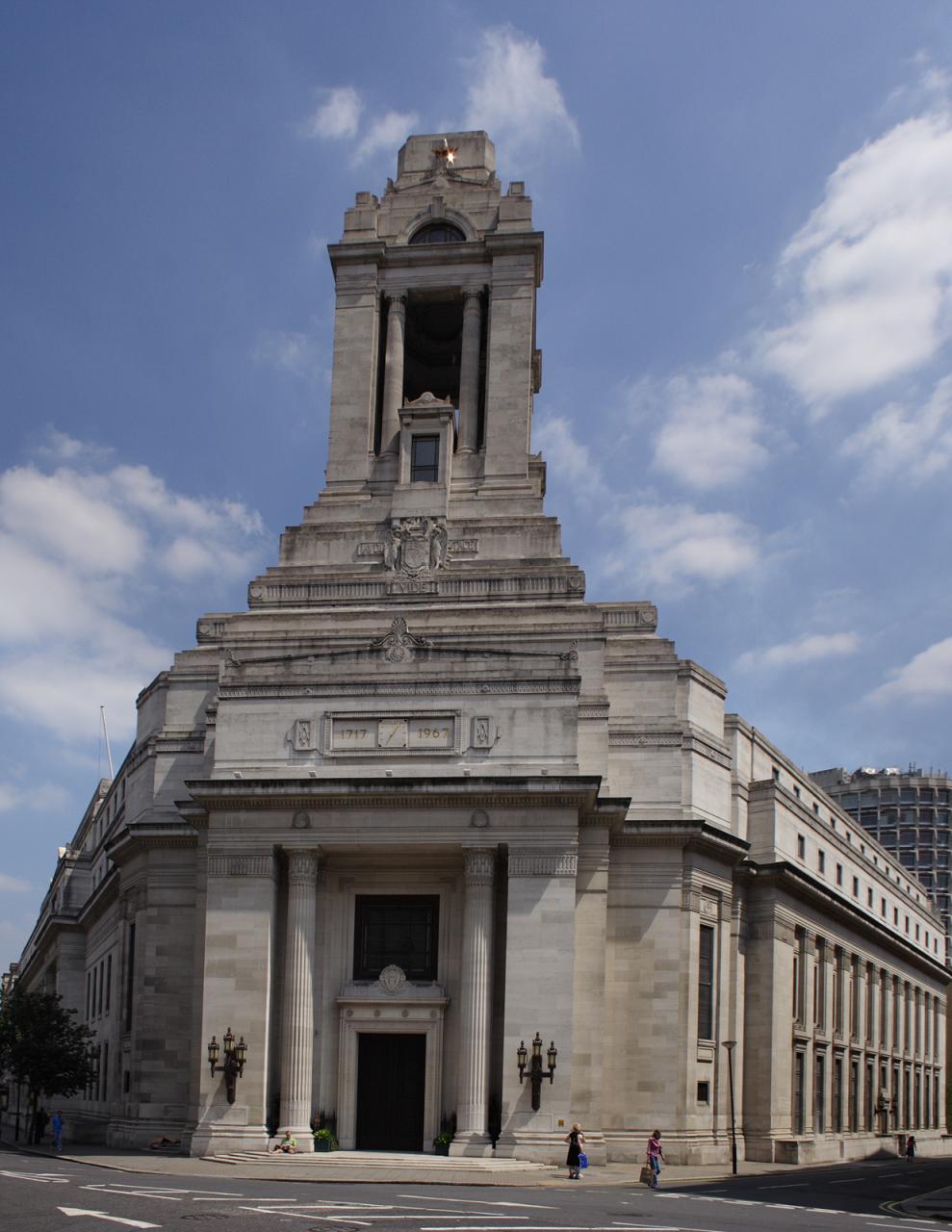
www.ugle.org.uk

Última edición por Admin el Lun Jun 02, 2014 10:33 am, editado 1 vez
 Re: GRAN LOGIA UNIDA DE INGLATERRA
Re: GRAN LOGIA UNIDA DE INGLATERRA
Earl of Scarborough (Lawrence Roger Lumley) (1896-1969) Grand Master of the United Grand Lodge of England, since 1951. He became the 11th Earl of Scarborough in 1945, on the death of his uncle. Is the son of Brigadier General Osbert Lumley. He went to Eton, and afterward to the Military Academy at Sandhurst. In 1921 he graduated from Magdalen College, Oxford U. Entering parliament, he represented Kingston-upon-Hull, East, 1922-29, and York from 1931-37. In the latter year he was appointed governor of Bombay, a post he retained until 1943, through a difficult period in the early war years. Upon his return to England, he was appointed parliamentary undersecretary for India and Burma. He was given the active rank of major general, and at the time was a member of the House of Lords. This office ended in 1947 with the passing of the Act of Indian Independence. In 1948 he was created a knight of the Most Noble Order of the Garter by King George VI. In 1937 he was created a knight grand commander of the Eminent Order of the British Empire, followed in 1943 by that of knight grand cross of the Most Exalted Order of the British Empire. Queen Elizabeth made him a knight of the Grand Cross of the Royal Victorian Order, and also Lord Chamberlain of the Household—one of the most important positions in England. In WWI he served in France with the 11th Hussars, and from 1921-37 with the Yorkshire Dragoons. He is the author of the history of the 11th Hussars. Was initiated in 1920 in Apollo University Lodge No. 357.


 Re: GRAN LOGIA UNIDA DE INGLATERRA
Re: GRAN LOGIA UNIDA DE INGLATERRA

Philip, 1st Duke of Wharton (16981731) Was the second person of the nobility to be Grand Master of England and the fourth Roman Catholic to hold that office. He has been called the "evil genius" of the early Grand Lodge days. When he was 18 the Old Pretender conferred on him the Dukedom of Northumberland, on the strength of which he borrowed and squandered £2,000 from the widow of James II. Upon returning from his travels, he espoused the Hanoverian cause and was rewarded with another dukedom. He took his seat in the House of Lords and was president of the notorious Hell-Fire Club. Anderson's account in his second Book of Constitutions (1738) accuses the duke of having engineered his irregular election as Grand Master in June 1722. He was almost certainly the founder of the anti-Masonic body of "Gormogons." In 1726 he left England, never to return, and the next year found him fighting against the British at the siege of Gibraltar. For this he was outlawed by England and shorn of his title and estates in 1729. In the same year he formed a lodge in Madrid, which lasted until 1768. He became a Roman Catholic in 1726 and died in a monastery. He was satirized by Pope in his Moral Essays: "Wharton, the scorn and wonder of our days, whose ruling passion was the lust of Praise.”

Última edición por Admin el Miér Jun 03, 2015 10:52 am, editado 1 vez
 GRANDES MAESTROS
GRANDES MAESTROS
- Prince Augustus Frederick, Duke of Sussex (1813–1843)
- Thomas Dundas, 2nd Earl of Zetland (1844–1870)
- George Robinson, 3rd Earl de Grey and 2nd Earl of Ripon (1st Marquess of Ripon from 1871) (1870–1874)
- Albert Edward, Prince of Wales (King of Great Britain and Ireland as Edward VII from 1901) (1874–1901)
- Prince Arthur, Duke of Connaught and Strathearn (1901–1939)
- Prince George, Duke of Kent (1939–1942)
- Henry Lascelles, 6th Earl of Harewood (1942–1947)
- Edward Cavendish, 10th Duke of Devonshire (1947–1950)
- Roger Lumley, 11th Earl of Scarbrough (1951–1967)
- Prince Edward, Duke of Kent (1968–present)
Última edición por Admin el Lun Nov 17, 2014 10:13 pm, editado 1 vez
 Aston Martin Centenary Party - Freemasons' Hall - July 2013
Aston Martin Centenary Party - Freemasons' Hall - July 2013
Aston Martin's centenary celebrations continued in July with a glittering black tie party for 1,000 Aston Martin owners and invited guests at the Freemasons' Hall, London. The party featured entertainment from national radio DJ Benji B, plus composer Grant Windsor and the 16-piece band Deviation Strings.
One of a series of exclusive events held around the world throughout 2013 as Aston Martin celebrates a century of Power, Beauty and Soul.
 Augustus Frederick, Duke of Sussex (1773-1843) First Grand Master of the United Grand Lodge of England
Augustus Frederick, Duke of Sussex (1773-1843) First Grand Master of the United Grand Lodge of England
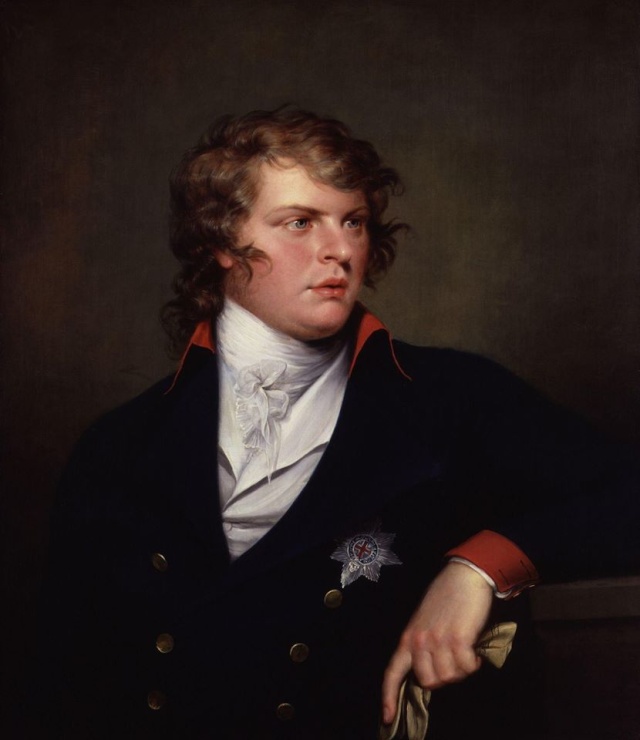
Augustus Frederick, Duke of Sussex (1773-1843) First Grand Master of the United Grand Lodge of England, serving 30 years, 1813-43. Born Jan. 27, 1773, the sixth son of King George III. Was initiated in the Royal York Lodge of Friendship at Berlin, Dec. 20, 1798. He later joined the Lodge of Antiquity (now No. 2), of which he was master for many years. He also served as master of the Lodge of Friendship No. 6 in March, 1808. In 1805 he was given the rank of past grand master by his brother, the Prince of Wales, who (when prince regent) appointed him as deputy grand master in 1812. The next year he succeeded as grand master of the Moderns, and at the union with the Ancients, was proposed by his elder brother, the Duke of Kent, who was grand master of the Ancients, as first grand master of the United Grand Lodge of England. The Royal Masonic Benevolent Institution was founded during his grand mastership, but rather despite than because of him. Exalted in 1810, he was M.E. Zerubbabel of the Grand Chapter, RAM., and grand superintendent of the Grand Conclave of Knights Templar. He took little interest in the orders of knighthood, and during his long career the grand conclave met only once. Died April 21, 1843.
 Masonic architecture: Grand Lodge in London
Masonic architecture: Grand Lodge in London
The headquarters of Freemasonry in England and Wales. The magnificent United Grand Lodge building in Great Queen Street in London, UK.
 William IV
William IV
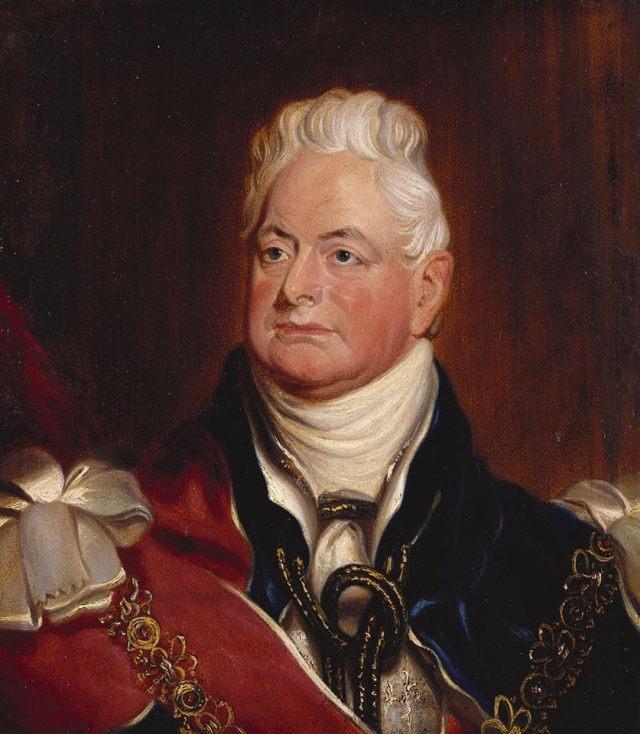
William IV (1765-1837) King of England, 1830-37 and King of Hanover, 1830-37. Called the "Sailor King" also "Silly Billy." Was the third son of George III. He was previously H.R.H. Prince William, Duke of Clarence and St. Andrews as well as Earl of Munster. Served as a midshipman in 1780; captain of a frigate in 1785 and stationed in West Indies. Became rear admiral in 1790. Sat in House of Lords and opposed emancipation of slaves. Became heir to the throne and lord high admiral in 1827.
Succeeded George IV, as king in 1830. Succeeded on British throne by his niece, Victoria, and on Hanoverian throne by his brother, Ernest Augustus, Duke of Cumberland. He was initiated in Lodge No. 86, Plymouth, England on March 9, 1786 and on May 30, 1789 became a member of Prince of Wales Lodge, London and was Master of same for three years prior to his elevation as king. His brother, the Duke of Sussex, became Grand Master of England. When he assumed the throne, he became Grand Patron of the Order in 1831.
 GRAND MASTER'S THRONE
GRAND MASTER'S THRONE


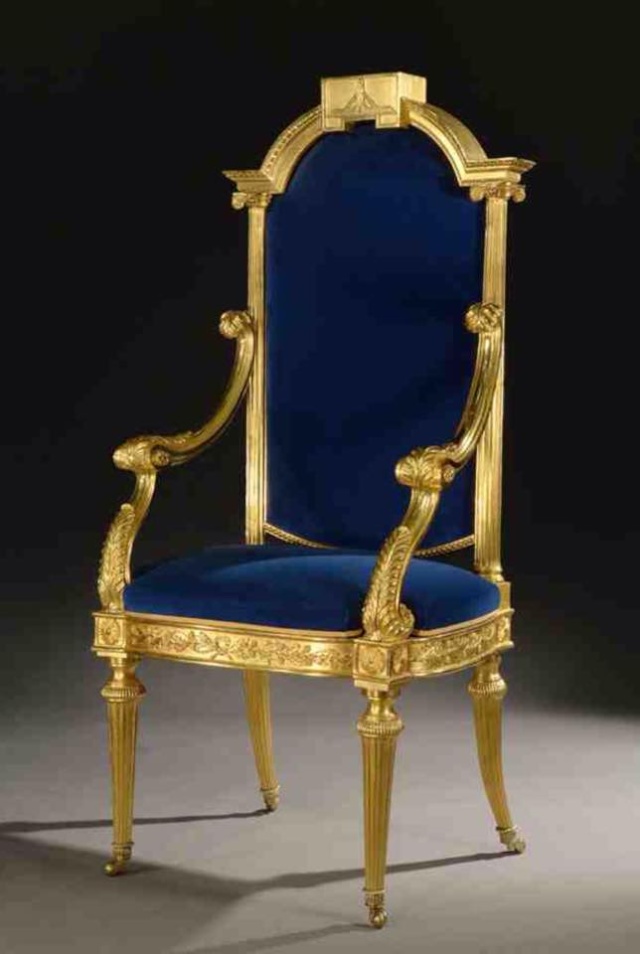
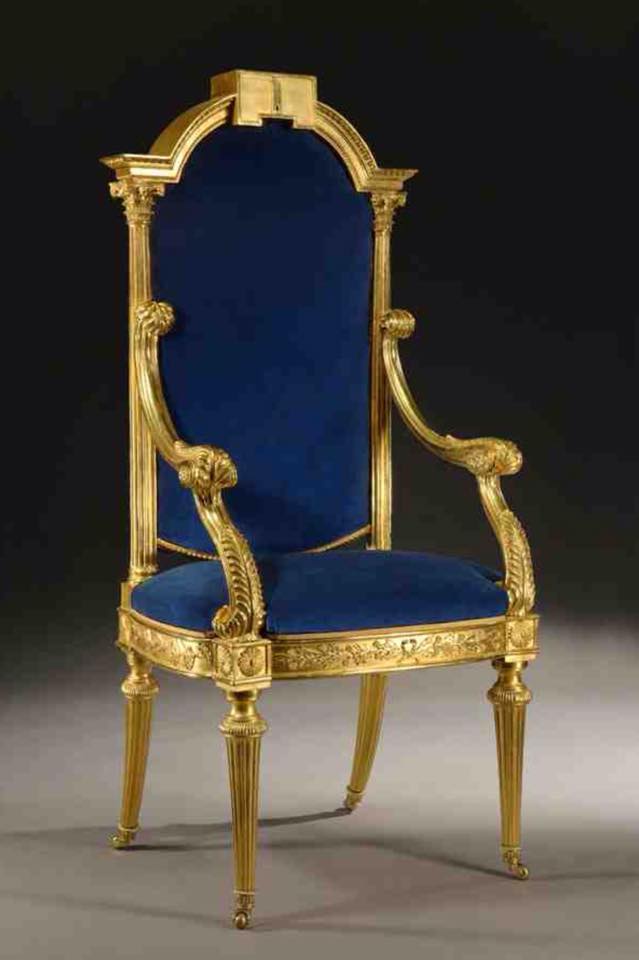
GRAND MASTER'S THRONE, SENIOR WARDEN'S CHAIR, JUNIOR WARDEN'S CHAIR, FOOTSTOOL. Gilded limewood, 1791.
Soon after the election of the Prince of Wales (later George IV) as the first Royal Grand Master in 1790, the Moderns Grand Lodge commissioned a ceremonial throne and two warden’s chairs, replete with Masonic symbolism, to be used in its new Freemasons’ Hall in central London. The London cabinet maker Robert Kennett charged £157 10s and took three months to complete the set in gilded limewood. Three footstools were also made although only one has survived. Robert Kennett is recorded in premises at 67 New Bond Street and was active from 1779-1796. The chairs have recently been conserved.
The Grand Master’s throne was commissioned by Grand Lodge in 1791 for the new Grand Master, the Prince of Wales (later Prince Regent, later George IV). It was to be accompanied by two wardens’ chairs and used in the new Freemasons’ Hall, the first permanent home of English freemasonry that has been completed in 1776. The chairs were to be made by Robert Kennett and to be in the French style admired by the Prince. Kennett was an established cabinet maker and upholsterer; it was at his suggestion that the chairs were upholstered in deep blue velvet. He had previously manufactured chairs for the Duchess of Beaufort at Badminton House, whose husband had been Grand Master from 1767-1771. In total the three chairs cost £157 10s (£157.50) and took three months to make. In gilded limewood, they were constructed in parts that could be slotted together and easily dismantled. Freemasons’ Hall was often hired out for non-masonic events and the chairs would have to be moved around, or even away, from the building so this would have proved a useful function. Originally there probably would have been three footstools but only the one survives. It is not certain that it was commissioned at the same time as the throne but it is believed to date from the same period.
The throne as it is today would not have been the throne that welcomed the Prince in 1791. Now over 200 years old, some changes have been made. Originally the throne would have been surmounted by the ostrich feather crest of the Prince of Wales. Since the resignation of George IV as Grand Master in 1813, many other Grand Masters have used this throne and not all have been the Prince of Wales. However, the crest was not replaced until c1901 when the Duke of Connaught was installed as Grand Master and the throne was furnished with a ducal coronet. The original feathers can be seen in the mezzotint of George IV seated in the throne, which also shows the original terrestrial and celestial globes. It is not known what became of these, but they have since been replaced by later reproductions. The present globes were constructed in the 1860s by Thomas Malby & Son, the renowned family of map and globe makers of the nineteenth century.
More recent restoration work has also been carried out on the chairs. Last used for the 275th anniversary of United Grand Lodge of England in 1992, the chairs had suffered some wear and tear, mainly to the gilding and carvings. In 2005-8, work was undertaken by W. Thomas Restorations Limited. After examining the chairs, they realised that they had been re-gilded several times since their original construction, the last time with oil gilde on a gesso base. They had also been lacquered. The culmination of so many layers meant that the carving had been obliterated. Construction repairs had also been made to the chairs, many of which now looked unsightly. These were all removed and any repairs needed were re-done using limewood and animal glue, and missing elements of the carving were replaced. All the previous layers of gilding were removed and a new layer of gesso was applied to the chairs. They were were water gilded using 23½ carat extra thick gold leaf – it took 190 books of leaf to complete the job! In total the restorers spent 3,765 hours working on the three chairs. The two globes were also restored by a specialist conservator.
( Taken from www.freemasonry.london.museum )
 Duke of Connaught as Grand Master
Duke of Connaught as Grand Master
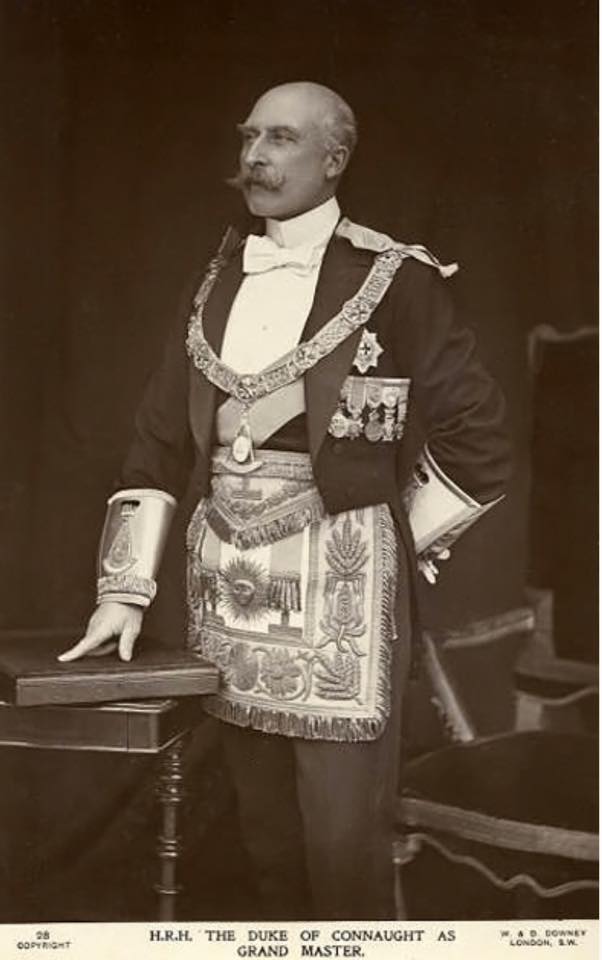
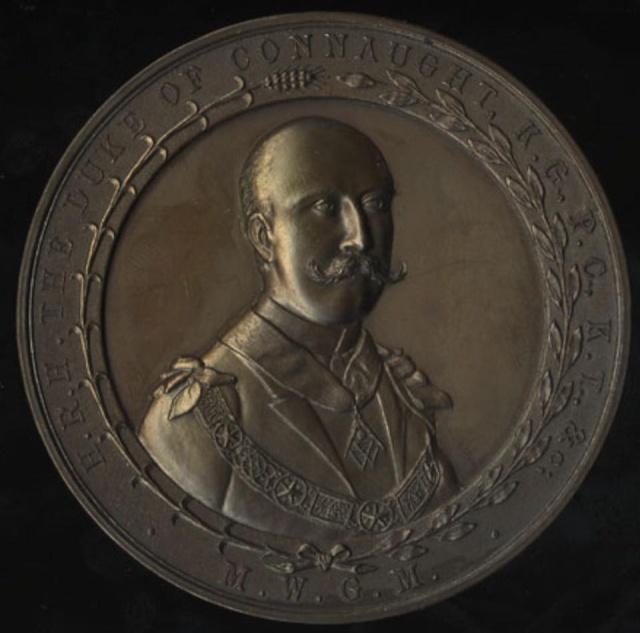
Medal commemorating the installation of the Duke of Connaught as Grand Master, 17th July, 1901.
 His Royal Highness Henry Frederick, 1st Duke of Cumberland
His Royal Highness Henry Frederick, 1st Duke of Cumberland
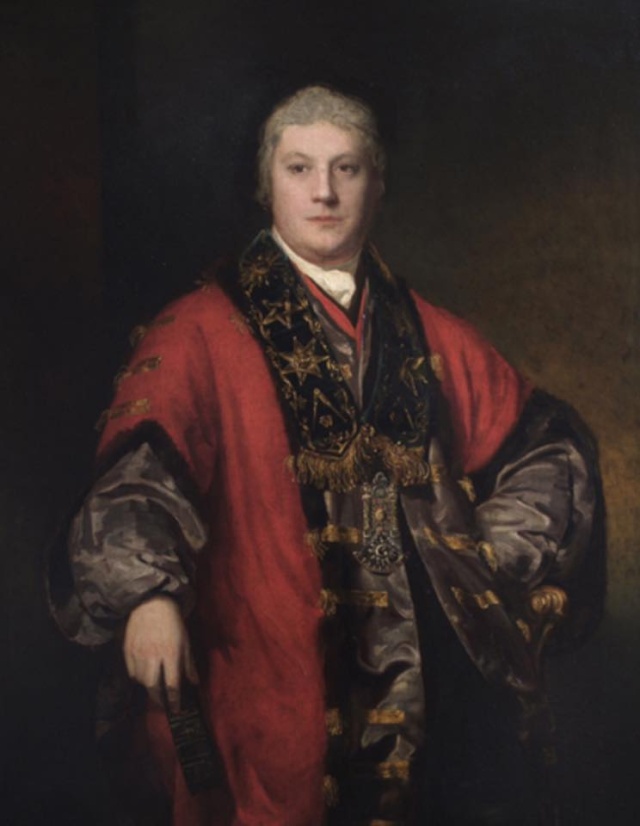
His Royal Highness Henry Frederick, 1st Duke of Cumberland was initiated into Freemasonry in 1767. In 1782 he became the first Royal Grand Master (Moderns), serving until his death in 1790.
 Re: GRAN LOGIA UNIDA DE INGLATERRA
Re: GRAN LOGIA UNIDA DE INGLATERRA
Gran Logia Unida de Inglaterra
[ltr]
La Gran Logia Unida de Inglaterra (UGLE en el acrónimo en inglés) es el principal cuerpo regulador de la Francmasonería en Inglaterra y en algunas jurisdicciones fuera de ella (normalmente países de la Mancomunidad Británica de Naciones o que pertenecieron al Imperio Británico). Está formada, según datos de su web oficial, por 270.000 miembros adscritos a unas 8.000 logias. La Gran Logia Unida de Inglaterra suele ser considerada como el principal referente mundial de la corriente masónica que se denomina regular, para distinguirla de la que admite la presencia de mujeres en la masonería y no establece para sus miembros la condición de creer en Dios o en un Ser Supremo y el juramento sobre un libro de la Ley Sagrada. La Gran Logia Unida de Inglaterra se considera una institución masónica regular, aspecto sobre el que discrepan otras corrientes de la Masonería.[/ltr]

Sede en Londres de la Gran Logia Unida de Inglaterra.
[ltr]
La Primera Gran Logia se constituyó el 24 de junio de 1717, cuando cuatro logias de Londres se reunieron en la tabernaGoose and Gridiron y formaron la que denominaron Gran Logia de Londres y Westminster. En 1723 se publicaron lasConstituciones de Anderson conteniendo sus reglas de organización y principios.[/ltr]
[ltr]
En 1751 un grupo de francmasones formó una Gran Logia rival, la Gran Logia de Masones Libres y Aceptados de Inglaterra, argumentando que la Gran Logia creada en Londres había introducido innovaciones y se había apartado de los antiguos linderos de la Masonería, mientras que ellos trabajaban de acuerdo con las antiguas reglas dadas por el Príncipe Eduardo en York en el año 926 d. C. Por este motivo, terminará siendo informalmente denominada como la Gran Logia de losantiguos, en contraposición a la Primera Gran Logia que, paradójicamente, será conocida como la de los modernos.[/ltr]
[ltr]
La Constitución de la Segunda Gran Logia, compilada por su Gran Secretario Laurence Dermott, se denomina Ahiman Rezon, nombre hebraico que aproximadamente viene a significar Una ayuda a un Hermano.[/ltr]
[ltr]
Henry Sadler, en su libro Hechos y ficciones masónicas (1887), contradice el discurso de Dermott, según el cual los miembros de la segunda Gran Logia habrían sido unos escindidos por causa de los usos tradicionales. Según Sadler, en realidad, los "antiguos" eran, sobre todo, inmigrantes irlandeses en Londres que, al ser recibidos con cierta hostilidad por las logias inglesas, decidieron constituir su propia organización.[/ltr]
[ltr]
Las diferencias rituales entre una y otra tradición no provendrían de ninguna "innovación" de la Gran Logia de Londres, sino que se deberían a la diferente manera en que, tanto en Irlanda como en Inglaterra, se llevaría a cabo la adopción y reorganización del patrimonio ritual de la vieja masonería escocesa. Si bien una parte de la historiografía ha tendido a exagerar las divergencias entre "modernos" y "antiguos", éstas no afectan en realidad más que a ciertas particularidades sobre la disposición de la logia y del ritual. En lo esencial, los ritos y las ceremonias masónicas son comunes en las dos tradiciones. Sin embargo, conocer las diferencias entre ellas, por irrelevantes que parezcan, resulta indispensable para comprender la génesis de los diferentes ritos masónicos, pues todos provienen de una de estas dos familias.[/ltr]
[ltr]
Las rivalidades entre ambas se mantuvieron durante 63 años, constituyendo el primer cisma de la francmasonería. En 1809, las dos Grandes Logias rivales iniciaron negociaciones para llegar a una unión equitativa, que se produjo el 27 de diciembre de 1813 de la mano de sus respectivos Grandes Maestros, los duques de Sussex y de Kent, hijos ambos del rey Jorge III. La nueva organización se denominó Gran Logia Unida de Inglaterra y es la que pervive en la actualidad. El duque de Sussex fue su primer Gran Maestro.[/ltr]
[ltr]
Actualmente, es el Principe Eduard, Duque de Kent, quien ejerce como Gran Maestro de la Gran logia Unida de Inglaterra.[/ltr]
[ltr]
Es aceptado por la generalidad de las Obediencias masónicas que la denominada regularidad de origen emana de la primitiva Gran Logia de Londres y Westminster. En este sentido, las Obediencias que se consideran regulares habrían recibido su carta patente directamente de esta Gran Logia o transmitida a través de otras Obediencias intermedias, cuyo primer eslabón sería la Gran Logia de Londres y Westminster.[/ltr]
[ltr]
Categorías:
[ltr]
La Gran Logia Unida de Inglaterra (UGLE en el acrónimo en inglés) es el principal cuerpo regulador de la Francmasonería en Inglaterra y en algunas jurisdicciones fuera de ella (normalmente países de la Mancomunidad Británica de Naciones o que pertenecieron al Imperio Británico). Está formada, según datos de su web oficial, por 270.000 miembros adscritos a unas 8.000 logias. La Gran Logia Unida de Inglaterra suele ser considerada como el principal referente mundial de la corriente masónica que se denomina regular, para distinguirla de la que admite la presencia de mujeres en la masonería y no establece para sus miembros la condición de creer en Dios o en un Ser Supremo y el juramento sobre un libro de la Ley Sagrada. La Gran Logia Unida de Inglaterra se considera una institución masónica regular, aspecto sobre el que discrepan otras corrientes de la Masonería.[/ltr]

Sede en Londres de la Gran Logia Unida de Inglaterra.
[ltr]
Historia de la Gran Logia Unida de Inglaterra
La Primera Gran Logia se constituyó el 24 de junio de 1717, cuando cuatro logias de Londres se reunieron en la tabernaGoose and Gridiron y formaron la que denominaron Gran Logia de Londres y Westminster. En 1723 se publicaron lasConstituciones de Anderson conteniendo sus reglas de organización y principios.[/ltr]
[ltr]
En 1751 un grupo de francmasones formó una Gran Logia rival, la Gran Logia de Masones Libres y Aceptados de Inglaterra, argumentando que la Gran Logia creada en Londres había introducido innovaciones y se había apartado de los antiguos linderos de la Masonería, mientras que ellos trabajaban de acuerdo con las antiguas reglas dadas por el Príncipe Eduardo en York en el año 926 d. C. Por este motivo, terminará siendo informalmente denominada como la Gran Logia de losantiguos, en contraposición a la Primera Gran Logia que, paradójicamente, será conocida como la de los modernos.[/ltr]
[ltr]
La Constitución de la Segunda Gran Logia, compilada por su Gran Secretario Laurence Dermott, se denomina Ahiman Rezon, nombre hebraico que aproximadamente viene a significar Una ayuda a un Hermano.[/ltr]
[ltr]
Henry Sadler, en su libro Hechos y ficciones masónicas (1887), contradice el discurso de Dermott, según el cual los miembros de la segunda Gran Logia habrían sido unos escindidos por causa de los usos tradicionales. Según Sadler, en realidad, los "antiguos" eran, sobre todo, inmigrantes irlandeses en Londres que, al ser recibidos con cierta hostilidad por las logias inglesas, decidieron constituir su propia organización.[/ltr]
[ltr]
Las diferencias rituales entre una y otra tradición no provendrían de ninguna "innovación" de la Gran Logia de Londres, sino que se deberían a la diferente manera en que, tanto en Irlanda como en Inglaterra, se llevaría a cabo la adopción y reorganización del patrimonio ritual de la vieja masonería escocesa. Si bien una parte de la historiografía ha tendido a exagerar las divergencias entre "modernos" y "antiguos", éstas no afectan en realidad más que a ciertas particularidades sobre la disposición de la logia y del ritual. En lo esencial, los ritos y las ceremonias masónicas son comunes en las dos tradiciones. Sin embargo, conocer las diferencias entre ellas, por irrelevantes que parezcan, resulta indispensable para comprender la génesis de los diferentes ritos masónicos, pues todos provienen de una de estas dos familias.[/ltr]
[ltr]
Las rivalidades entre ambas se mantuvieron durante 63 años, constituyendo el primer cisma de la francmasonería. En 1809, las dos Grandes Logias rivales iniciaron negociaciones para llegar a una unión equitativa, que se produjo el 27 de diciembre de 1813 de la mano de sus respectivos Grandes Maestros, los duques de Sussex y de Kent, hijos ambos del rey Jorge III. La nueva organización se denominó Gran Logia Unida de Inglaterra y es la que pervive en la actualidad. El duque de Sussex fue su primer Gran Maestro.[/ltr]
[ltr]
Actualmente, es el Principe Eduard, Duque de Kent, quien ejerce como Gran Maestro de la Gran logia Unida de Inglaterra.[/ltr]
[ltr]
Regularidad de origen
Es aceptado por la generalidad de las Obediencias masónicas que la denominada regularidad de origen emana de la primitiva Gran Logia de Londres y Westminster. En este sentido, las Obediencias que se consideran regulares habrían recibido su carta patente directamente de esta Gran Logia o transmitida a través de otras Obediencias intermedias, cuyo primer eslabón sería la Gran Logia de Londres y Westminster.[/ltr]
[ltr]
Enlaces externos
[/ltr] Wikimedia Commons alberga contenido multimedia sobre Gran Logia Unida de Inglaterra.
Wikimedia Commons alberga contenido multimedia sobre Gran Logia Unida de Inglaterra.- (Inglés) United grand lodge of England.
Categorías:
- Grandes Logias
- Francmasonería por país
- 1717
https://es.wikipedia.org/wiki/Gran_Logia_Unida_de_Inglaterra
 "Beyond the Craft" y el Duque de Sussex
"Beyond the Craft" y el Duque de Sussex
"Beyond the Craft" y el Duque de Sussex, primer Gran Maestro de la Gran Logia Unida de Inglaterra
Beyond the Craft es un conocido libro, actualmente en su 5ª edición, que ha servido de guía a los masones ingleses para entender la maraña de Cuerpos y Ordenes colaterales presentes en la Masonería de la principal Obediencia europea y (auto)considerada como la Gran Logia Madre de todas las Grandes Logias y Grandes Orientes.
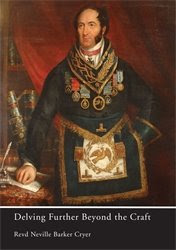
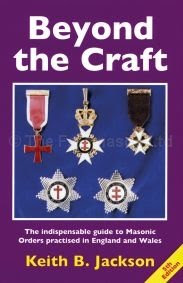
Recientemente una nueva obra, escrita por el Revd. Barker Cryer Neville, Pasado Gran Capellán de la Gran Logia Unida de Inglaterra y Pasado Maestro de la Logia de Estudios Quatuor Coronati, reconocido autor y conferenciante masónico, ha visto la luz y permite indagar en el origen histórico y peculiaridades de, entre otros, los siguientes cuerpos masónicos:
La Masonería de Marca
Los Nautas del Arca Real
El Monitor Secreto
Los Grados Crípticos
Los Grados Masónicos Aliados (The Grand Tyler of Solomon, Knights of St Lawrence the Martyr, Knights of Constantinople, The Red Cross of Babylon y Grand High Priest)
El Rito Antiguo y Aceptado
Los grados del Santo Sepulcro y de San Juan Evangelista
Los Caballeros Templarios

Pero, ¿por qué la Masonería presenta este concurrido y aparentemente desorganizado panorama? Para entenderlo debemos conocer la figura y el papel desempeñado por Augusto Federico, Duque de Sussex, sexto hijo varón del rey Jorge III y Gran Maestro de la Gran Logia de los Modernos y, tras la unificación de las dos Grandes Logias rivales, fue su Gran Maestro hasta su muerte acaecida en 1843.
Durante su maestría tomó importantes medidas para fortalecer la unión de las dos Grandes Logias, entre ellas impulsó la creación de la Logia de Reconciliación, que sería la responsable de la fijación del nuevo ritual. Favorable como era a una mayor participación de católicos y judíos en la sociedad inglesa del momento, favoreció una cierta descristianización de la Gran Logia y de sus prácticas.
Desde otro ángulo, el Duque de Sussex no fue partidario de la existencia de grados y órdenes fuera de los tres grados de Aprendiz, Compañero y Maestro y del Supremo Capítulo del Arco Real, suprimiendo de modo activo cualquier otra entidad. No sería hasta después de su muerte cuando resurgirían con fuerza, pero ya fuera de la estructura de la Gran Logia, al contrario de lo que sucede en las otras Grandes Logias británicas, como la Gran Logia de Escocia y la Gran Logia de Irlanda, o las Grandes Logias americanas.
La Masonería de Marca
Los Nautas del Arca Real
El Monitor Secreto
Los Grados Crípticos
Los Grados Masónicos Aliados (The Grand Tyler of Solomon, Knights of St Lawrence the Martyr, Knights of Constantinople, The Red Cross of Babylon y Grand High Priest)
El Rito Antiguo y Aceptado
Los grados del Santo Sepulcro y de San Juan Evangelista
Los Caballeros Templarios

Pero, ¿por qué la Masonería presenta este concurrido y aparentemente desorganizado panorama? Para entenderlo debemos conocer la figura y el papel desempeñado por Augusto Federico, Duque de Sussex, sexto hijo varón del rey Jorge III y Gran Maestro de la Gran Logia de los Modernos y, tras la unificación de las dos Grandes Logias rivales, fue su Gran Maestro hasta su muerte acaecida en 1843.
Durante su maestría tomó importantes medidas para fortalecer la unión de las dos Grandes Logias, entre ellas impulsó la creación de la Logia de Reconciliación, que sería la responsable de la fijación del nuevo ritual. Favorable como era a una mayor participación de católicos y judíos en la sociedad inglesa del momento, favoreció una cierta descristianización de la Gran Logia y de sus prácticas.
Desde otro ángulo, el Duque de Sussex no fue partidario de la existencia de grados y órdenes fuera de los tres grados de Aprendiz, Compañero y Maestro y del Supremo Capítulo del Arco Real, suprimiendo de modo activo cualquier otra entidad. No sería hasta después de su muerte cuando resurgirían con fuerza, pero ya fuera de la estructura de la Gran Logia, al contrario de lo que sucede en las otras Grandes Logias británicas, como la Gran Logia de Escocia y la Gran Logia de Irlanda, o las Grandes Logias americanas.
 Thomas Dundas, 2º Gran Maestre de la gran logia de Inglaterra
Thomas Dundas, 2º Gran Maestre de la gran logia de Inglaterra

Thomas Dundas, 2º Conde de Zetland (1795-1873) Gran Maestre de la gran logia de Inglaterra, 1844-70. iniciado en el príncipe de Gales Logia de no. 259 en 1830, se convirtió en su maestro adjunto en 1837, y fue nombrado teniente gran maestro en 1839. Fue la tercera generación de dundases para servir bajo el Duque de Sussex, ya sea como diputado o pro-Grand Amo. Fue nombrado para el último cargo en 1841 por el duque, quien tres años más tarde fue a triunfar como gran maestre. En 1844 fue elegido primer grand en la royal arco principal. Su título era una variante de " Shetland."
 Most Worshipful Grand Master Edward William Spencer Cavendish, 10th Duke of Devonshire
Most Worshipful Grand Master Edward William Spencer Cavendish, 10th Duke of Devonshire

Most Worshipful Grand Master Edward William Spencer Cavendish, 10th Duke of Devonshire, KG, MBE, TD (6 May 1895 – 26 November 1950), known as Marquess of Hartington from 1908 to 1938, was the head of the Devonshire branch of the Cavendish family. He had careers with the army and in politics and was a senior Freemason. His sudden death, apparently of a heart attack at the age of fifty-five, occurred in the presence of the suspected serial killer John Bodkin Adams.
He was a Freemason and was Grand Master of the United Grand Lodge of England from 1947 to 1950.
 Temas similares
Temas similares» CCC Aniversario Gran Logia Unida de Inglaterra
» Los Cuatro Coronados n.º 2076 de la Gran Logia Unida de Inglaterra (UGLE)
» Logia Fraternidad de la Gran Logia Unida de las Antillas
» Los Cuatro Coronados n.º 2076 de la Gran Logia Unida de Inglaterra (UGLE)
» Logia Fraternidad de la Gran Logia Unida de las Antillas
Página 1 de 1.
Permisos de este foro:
No puedes responder a temas en este foro.








» Cines de Cuba
» Visita del MRGM Ernesto Zamora a la Logia Renacer No. 410
» Spectre (2015) - Original Soundtrack Extended
» LAS LOGIAS EN CUBA
» 200th Class Reunion November 3 & 4
» 200th Class Reunion Cap and Ring Ceremony
» Fraternidad UD Primera Sesión 21 de Noviembre de 2019
» Knights of St. Andrew Valle de Miami, Oriente de la Florida